Telescopes Guide
Magnification power
Magnification power refers to how much an object appears to be enlarged when observed through the lens of a telescope. It is represented by a number followed by an 'x'. Higher magnification power enables you to see objects in greater detail, but it also comes with some caveats such as diminished brightness and a narrower field of view. For beginners, a telescope with a moderate magnification power, such as the Celestron PowerSeeker 127EQ Telescope with a magnification power of 250x, would be a great choice. This telescope offers a good entry-level magnification power while keeping a balance between image clarity and brightness. If you’re more experienced and interested in deep-space observing, you could consider telescopes with higher magnification powers, like the Celestron NexStar 8SE Telescope with a magnification power of 480x, known for delivering outstanding views of planets and distant galaxies. Remember, it is essential to consider your level of expertise, intended use, and desired observations when selecting a telescope with the appropriate magnification power for you.
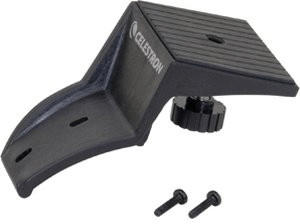
Aperture size
The aperture refers to the diameter of the telescope's primary lens or mirror, which determines the amount of light the telescope can collect. Generally, telescopes with larger apertures allow for brighter, clearer, and more detailed observations. It is important to note that this is true regardless of the type of telescope, be it reflector, refractor, or compound.
For beginners or those on a budget, an excellent starting point is the Celestron PowerSeeker 127EQ. With a 127mm (5-inch) aperture, it offers a balanced combination of affordability and performance. Moving up a notch, intermediate astronomers might consider the Orion SkyQuest XT8 Classic Dobsonian Telescope. Sporting a larger 203mm (8-inch) aperture, this Dobsonian telescope provides exceptional light-gathering capabilities, promising stunning views of nebulae, planets, and galaxies. For serious astrophotography enthusiasts who require more advanced equipment, the Celestron CGX Equatorial Mount telescope with various apertures ranging from 203mm (8-inch) to 355mm (14-inch) would be an ideal choice. These models represent different price ranges and fulfill the varying needs of astronomers at different skill levels.
Focal length
The focal length refers to the distance between the lens or mirror of the telescope and the point where the light is focused. A longer focal length will result in higher magnification and narrower fields of view, making it great for observing small astronomical details such as planets and galaxies. On the other hand, a shorter focal length will provide a wider field of view, making it suitable for observing larger, extended objects like star clusters and nebulae.
For those interested in high magnification and detailed astronomical observations, the Celestron NexStar 8SE Telescope is a reliable choice. With a focal length of 2032mm and a maximum useful magnification of 480x, it is well-suited for observing lunar craters or the rings of Saturn. Another option in this category is the Orion SkyQuest XT10 PLUS Telescope with a focal length of 1200mm, which offers excellent views of the Moon's craters or Jupiter's cloud bands.
For astrophotography enthusiasts looking for a wider field of view to capture larger objects, the Orion ED80T CF Triplet Apochromatic Refractor Telescope could be an ideal choice. With a focal length of 480mm and a focal ratio of f/6, this telescope allows for wide-field astrophotography, making it perfect for capturing stunning shots of galaxies or the Milky Way. Another suitable option is the Celestron Advanced VX 6" Refractor Telescope, which combines a focal length of 1200mm and an aperture of 150mm, making it a well-rounded choice for both visual and astrophotography observations.

Understanding the focal length of a telescope is crucial in determining the type of observations or astrophotography you wish to engage in. Whether you're in search of high magnification or a wider field of view, there are various telescopes available on the market to suit your needs.
Mount type
Choosing the right mount for your telescope is crucial as it affects stability and ease of maneuverability during observation sessions. There are two main types of mounts to consider: Altazimuth and Equatorial. An Altazimuth mount allows movement in two perpendicular axes (vertical and horizontal), making it perfect for beginners and casual astronomers. A great example of an Altazimuth mount is the Celestron PowerSeeker 127EQ Telescope. On the other hand, an Equatorial mount is preferred for serious astronomical imaging and tracking objects such as planets or galaxies. It moves in a fixed way reflecting Earth's rotation and uses hour angle and declination coordinates to locate objects more precisely. An impressive example of an Equatorial mount is the Orion Sirius EQ-G Computerized GoTo Telescope Mount. Both mounts have their pros and cons, so it's important to consider your observing goals and experience level before making a decision.
Weight
It is essential to consider a telescope's weight to ensure it is portable and easy to transport. One great option for lightweight telescopes is the 'Celestron NexStar 5SE', weighing only 10 pounds. It offers high-quality optics with a 5-inch aperture, making it perfect for observing celestial objects. Another lightweight option is the 'Orion SkyQuest XT6 Classic Dobsonian Telescope', weighing just 23.5 pounds. This telescope provides vast aperture power to view deep-sky objects and unique features like its Teflon base to ease azimuth motion. Remember, considering the weight of the telescope is vital for those who prioritize portability without compromising functionality.
Portability
A portable telescope allows for ease of transport and setup, making it ideal for those who want to take it on-the-go or have limited space for storage. One excellent option for a portable telescope is the Celestron NexStar 6SE. It weighs only 30 pounds and has a compact design, making it easy to carry. Another portable option is the Orion StarBlast 4.5 Astro Reflector Telescope, which weighs around 12 pounds and is small enough to be handheld. For those looking for a lightweight and portable telescope that is also affordable, the Zhumell Z100 Portable Altazimuth Reflector Telescope is a great choice, as it weighs just 10 pounds and can be easily carried in a backpack thanks to its collapsible design.
Optical quality
The optical quality of a telescope largely determines the clarity and sharpness of the images you observe. One important specification to look for is the telescope's aperture, which refers to the diameter of its primary lens or mirror. A larger aperture allows more light to enter the telescope, resulting in brighter and more detailed images. For example, the Celestron NexStar 8SE Telescope offers an impressive 8-inch aperture, providing excellent optical quality for celestial observations. Other popular telescopes known for their exceptional optical quality include the Orion SkyQuest XT8 Classic Dobsonian Telescope and the Meade Instruments LX90-ACF Telescope.

Objective lens diameter
It plays a significant role in determining the amount of light that the telescope can capture and thus affects the image quality and brightness. Telescopes with larger objective lens diameters are capable of collecting more light, resulting in brighter and clearer images. For example, the Celestron PowerSeeker 127EQ Telescope features a 127mm (5-inch) objective lens, enabling it to gather a substantial amount of light. Similarly, the Orion SkyQuest XT8 Classic Dobsonian Telescope boasts an even larger objective lens diameter of 203mm (8 inches), providing excellent light-gathering ability for impressive views of celestial objects.
When it comes to objective lens diameter, telescopes can be categorized into different groups based on their size. Entry-level telescopes typically have objective lens diameters ranging from 70mm to 90mm, such as the Meade Instruments Infinity 70mm Refractor Telescope and the Celestron NexStar 90 SLT Computerized Telescope. These are easy to handle and are great for beginners or those on a tighter budget. Mid-range telescopes usually feature objective lens diameters between 100mm and 150mm, such as the Orion StarBlast 114mm Reflector Telescope and the SkyWatcher ProED 120mm Doublet APO Refractor. These provide a good balance between portability and light gathering ability. For more advanced astronomers, larger telescopes with objective lens diameters exceeding 150mm are ideal, including the Orion SkyQuest XX14i IntelliScope Truss Dobsonian Telescope with a massive 356mm (14-inch) objective lens. These telescopes are perfect for more detailed and profound observations.
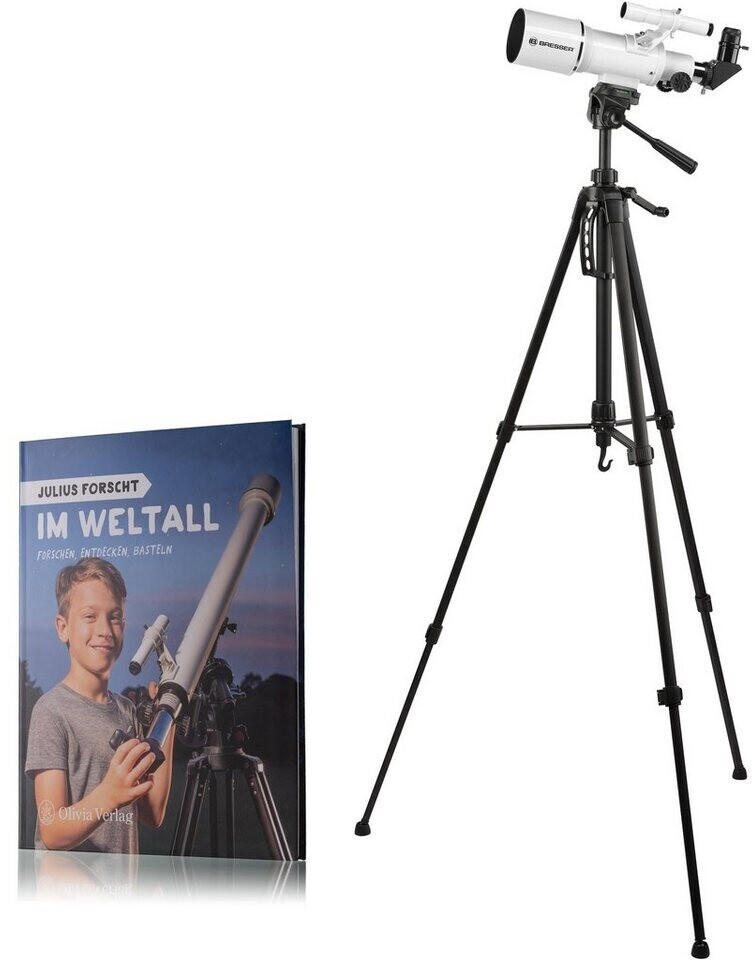
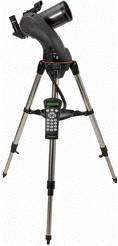
Eyepiece design
Various factors such as field of view, magnification, and eye relief are determined by the design of the eyepiece. One popular type of eyepiece design is the Plossl with its four-element configuration, providing excellent clarity, edge-to-edge sharpness, and a wide field of view. The Celestron Omni Series Plossl Eyepieces, with their multi-coated optics and threaded barrels for filters, are well-regarded within this category. Another notable design is the wide-angle eyepiece, which offers a significantly larger field of view due to its complex lens arrangement. The Explore Scientific 82° Series Eyepieces are highly recommended for those looking for an immersive observing experience, featuring a generous 82-degree apparent field of view and premium optical quality.
Segmenting eyepieces further, some cater to specific needs like planetary viewing. These eyepieces prioritize high magnification and detailed observation. Skyy-Watcher's Nirvana and Starguider eyepiece series are excellent choices for planetary enthusiasts, boasting premium glass, multi-coated optics, and long eye relief for comfortable viewing. On the other hand, for deep-sky exploration, wide-field eyepieces are ideal. Vixen Optics offers the NLVW Series Wide-Angle Eyepieces, providing an expansive 65-degree apparent field of view and superb edge sharpness for immersing yourself in the vastness of the night sky. Ultimately, choosing the right eyepiece design depends on your specific preferences and the observed objects, so exploring the options available will ensure you find the perfect match for your telescope.
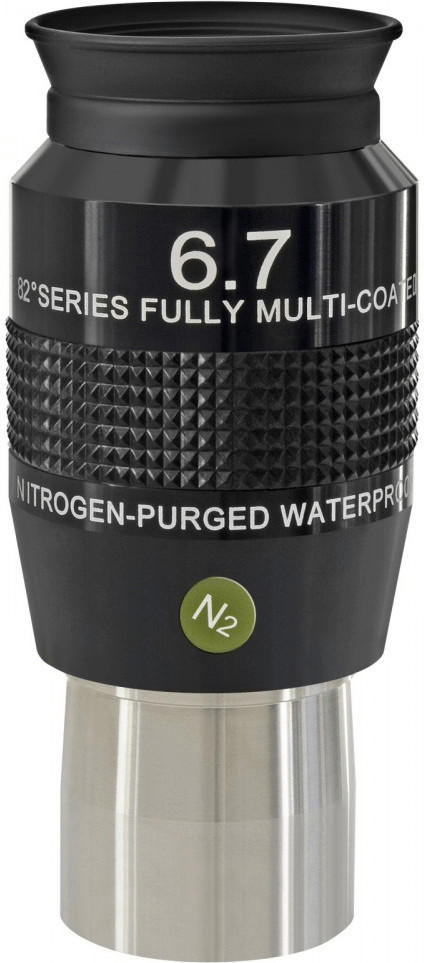
Field of view
It is typically measured in degrees and can range from a few degrees to several degrees, depending on the telescope. A wide field of view allows for capturing larger celestial objects such as star clusters or the Milky Way, while a narrower field of view is helpful for focusing on specific details within smaller objects such as planets or the Moon.
Some telescopes with a wide field of view include the Celestron NexStar 8SE, which offers a 0.63-degree field of view and is ideal for observing wider objects like galaxies and nebulae. Another option is the Orion StarBlast 6 Astro Reflector, providing a 1.4-degree field of view and suitable for observing a wider range of celestial objects. On the other hand, telescopes with a narrower field of view include the Meade ETX125 Observer, with a 0.80-degree field of view, perfect for close-up views of planets, and the Sky-Watcher ProED 80mm Doublet APO, with a versatile field of view of 1.7 degrees, allowing for both wide-field and more detailed observations. Overall, the choice depends on your specific interests and the type of objects you wish to observe in the night sky.
Focuser type
The focuser is responsible for holding and accurately positioning the eyepiece, allowing you to achieve clear and sharp views of celestial objects. There are generally two types of focuser: rack-and-pinion and Crayford. Rack-and-pinion focusers, such as the Celestron PowerSeeker 127EQ Telescope, use a geared system for smooth and precise focusing. They are reliable and easy to use, making them a great choice for beginners. On the other hand, Crayford focusers, like the Orion XT8 Classic Dobsonian Telescope, use a roller-bearing system for even smoother and more precise focusing. They are ideal for astrophotography and more advanced observers who demand higher quality focusing capability. Whether you are just starting out or looking for enhanced precision, choosing the right focuser type will significantly impact your observing experience.
Tripod stability
A stable tripod helps ensure steady viewing and minimizes vibrations that could affect the clarity of the images. Look for tripods that are made from sturdy materials such as aluminum or carbon fiber, as they offer better stability. An example of a telescope with a stable tripod is the Celestron NexStar 8SE. This telescope comes with a durable stainless steel tripod that provides excellent stability. Another option is the Orion SkyQuest XT10 Plus Dobsonian Telescope, which features a wooden altazimuth base with built-in stabilizing legs to keep the tripod steady during viewing sessions.
It's worth noting that tripods can often be split into different groups based on their design and intended use. In the entry-level segment, the Meade Instruments Infinity 70mm refractor telescope is a great choice. It includes an alt-azimuth mount with an adjustable tripod that offers stability for beginners. In the intermediate segment, the Orion AstroView 120ST Equatorial Refractor stands out, featuring a robust equatorial mount tripod with an adjustable height aluminum tripod. Finally, for more advanced astronomers, the Celestron CGX-L Equatorial 1400 telescope offers a heavy-duty computerized mount with a robust stainless steel tripod that provides unparalleled stability even for larger scopes.
Coating and reflectivity
The type and quality of coatings on the optical surfaces of a telescope can greatly affect the brightness, contrast, and clarity of the images it produces. Look for telescopes that feature multiple layers of anti-reflective coating, such as the Celestron NexStar 8SE or the Orion SkyQuest XT10 Plus. These coatings help minimize the amount of stray or scattered light, resulting in sharper and clearer views of celestial objects.
There are different types of coatings used in telescopes, including Fully Multi-Coated (FMC), Multi-Coated (MC), and Coated (C). Fully Multi-Coated optics, like those found in the Sky-Watcher Evostar 80ED, offer the highest level of light transmission and are preferable for more demanding celestial observation. On the other hand, telescopes with Multi-Coated or Coated optics, such as the Meade Instruments LightBridge Mini 114, still provide decent performance at a more affordable price point.
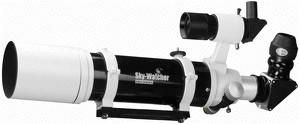
Collimation mechanisms
Collimation mechanisms play a crucial role in ensuring the accuracy and precision of your telescope's image. One popular type of collimation mechanism is the secondary mirror adjustment screws found in many telescopes. These screws allow for precise alignment of the secondary mirror, resulting in improved image quality. An excellent example of a telescope that has this collimation mechanism is the Celestron NexStar 8SE. With its secondary mirror adjustment screws, this telescope allows for easy and precise collimation, ensuring sharp and detailed views of celestial objects.
Another type of collimation mechanism is the primary mirror adjustment systems. These systems typically consist of collimation screws or knobs, which can be adjusted to align the primary mirror and improve the telescope's performance. One impressive product that utilizes this collimation mechanism is the Orion SkyQuest XT8 Plus. This telescope features a collimation mechanism that allows for precise adjustment of the primary mirror, optimizing the telescope's light-gathering capabilities and producing exceptional images.
Image resolution
Image resolution determines the level of detail and clarity you can expect to see in celestial objects. It is measured in arcseconds, with smaller numbers indicating higher resolution. For amateur astronomers looking for superior image resolution, high-end telescopes such as the Celestron CPC 1100 StarBright XLT GPS Schmidt-Cassegrain 11-inch Telescope and the Orion CT80 Compact Refractor Telescope are excellent options. These telescopes feature advanced optics and large aperture sizes, resulting in impressive image resolution that allows you to observe distant objects with astounding precision. For those on a tighter budget, the Sky-Watcher 6-Inch Traditional Dobsonian Telescope and the Meade Instruments StarNavigator NG 90mm Achromatic Refractor Telescope offer good image resolution at a more affordable price point. Both telescopes are well-suited for beginners and intermediate astronomers looking to explore the night sky with better clarity.
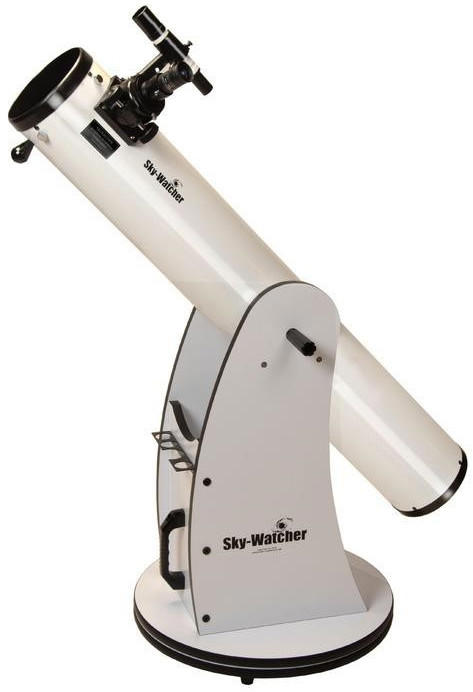
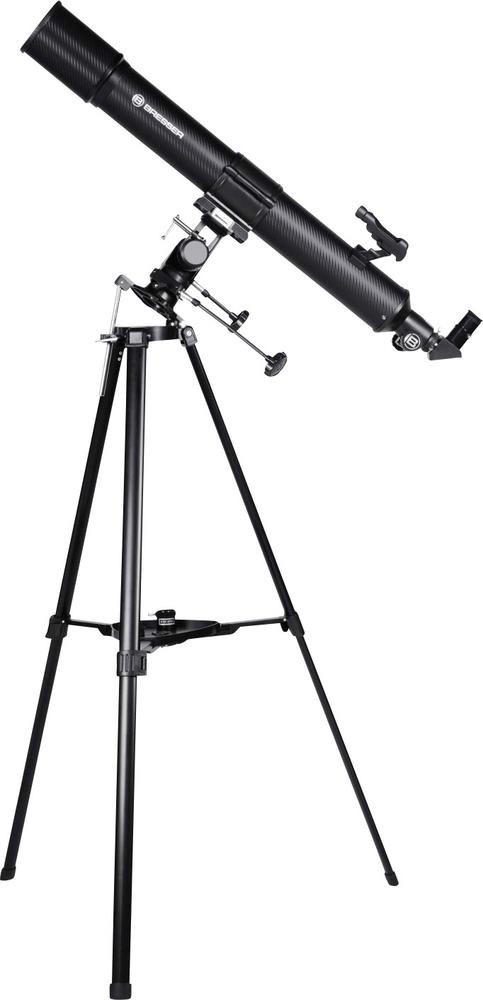
Image clarity
The clarity of the images produced by a telescope is directly correlated to its optical quality. It is crucial to look for telescopes that feature high-quality optics such as fully coated or multi-coated lenses, as these coatings enhance light transmission and reduce the glare caused by reflections.
For those looking for an entry-level option without compromising image clarity, the Celestron PowerSeeker 80EQ is an excellent choice. With an 80mm aperture and a 900mm focal length, this telescope offers clear and detailed views of celestial objects. Additionally, its slow-motion control allows for smooth and precise adjustments, enhancing the overall viewing experience.
If image clarity is of utmost importance and a higher budget is available, the Orion SkyQuest XT10 Plus offers exceptional optical performance. With its large 10-inch aperture and 1200mm focal length, this telescope provides sharp and breathtaking views of stars, galaxies, and nebulae. Its quality optics, including a parabolic primary mirror and two-inch dual-speed Crayford focuser, ensure outstanding image quality. While it may require more investment, the image clarity provided by the SkyQuest XT10 Plus is worth it for astronomy enthusiasts seeking optimal performance.
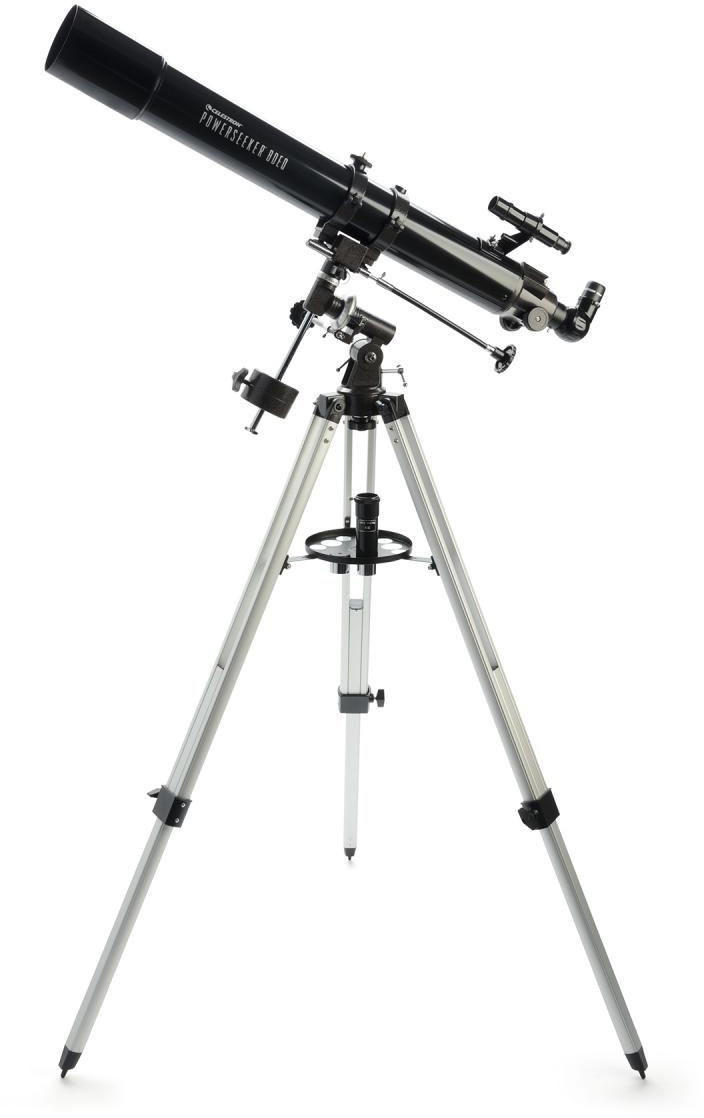
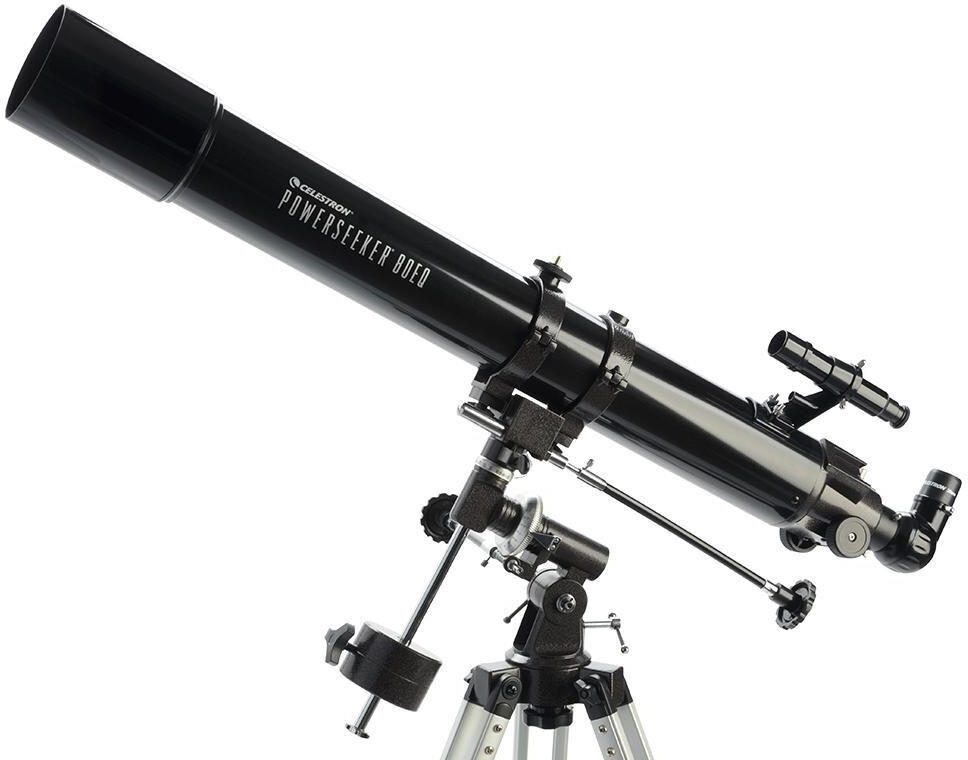
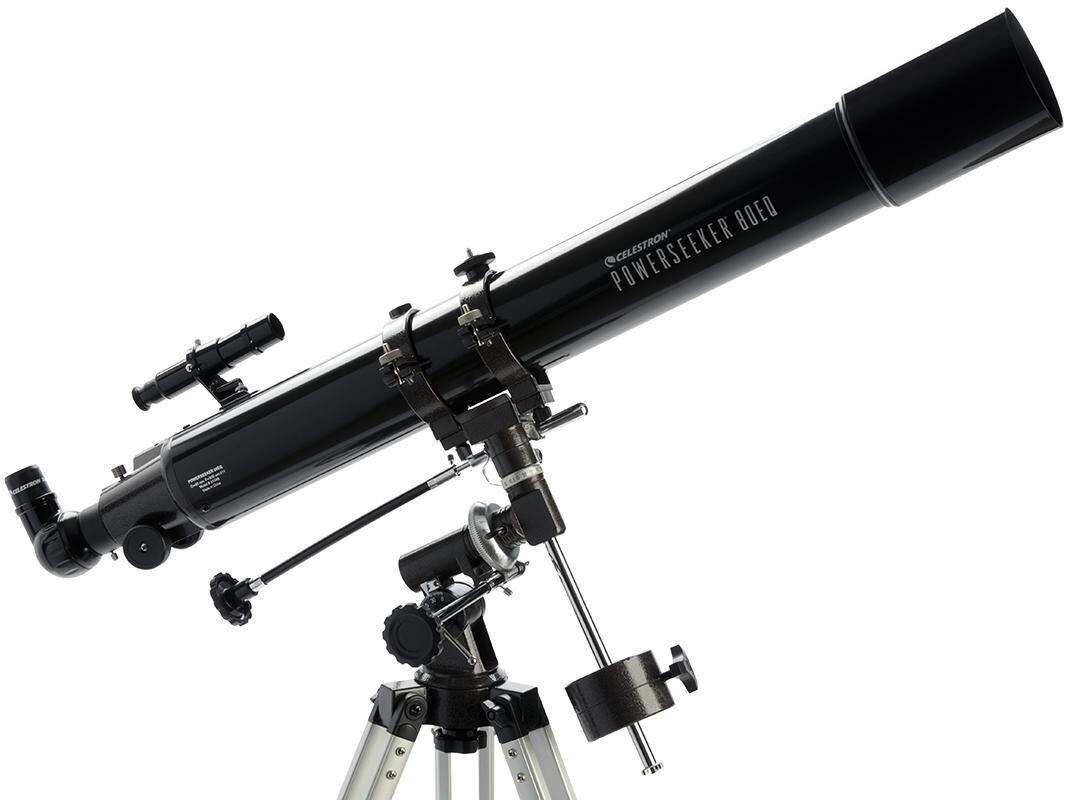
Image clarity is crucial in choosing the best telescope, and considering telescopes with high-quality optics like the Celestron PowerSeeker 80EQ or the Orion SkyQuest XT10 Plus is a great starting point.



Low-light performance
This refers to the telescope's ability to gather and capture light even in low-light conditions. To find the best option for you, it's advisable to look for telescopes with larger aperture sizes as they can gather more light.
For those seeking exceptional low-light performance, some top recommendations include the Celestron NexStar 8SE Telescope with its 8 inches of aperture, allowing for a magnificent light-capturing capacity that brings out incredible detail even in dimly lit areas of the sky. Another excellent choice is the Orion SkyQuest XT8 PLUS Dobsonian Telescope with its 8-inch aperture, ideal for observing celestial objects in low-light conditions with impressive clarity. For those just starting out but still wanting to explore low-light observations, the Sky-Watcher EvoStar 72 APO Refractor Telescope offers a more affordable option. Its 72mm aperture still provides decent low-light performance and would be suitable for beginners venturing into astrophotography or general stargazing.

Ease of setup
Some telescopes require extensive assembly, requiring the user to follow complex instructions and use a variety of tools. However, there are other telescopes that are designed with ease of setup in mind, making it much simpler for beginners or individuals who prefer a more user-friendly experience.
For example, the Celestron 31042 AstroMaster 114 EQ Reflector Telescope offers hassle-free setup with its quick and easy no-tool setup process. It also features a permanently mounted StarPointer, which assists in initially locating and aligning objects in the sky. Another option is the Orion GoScope II 70mm Refractor Telescope, which is designed for portability and features a tabletop mount that sets up in seconds. This telescope is a great choice for beginners and is lightweight, compact, and easy to store.
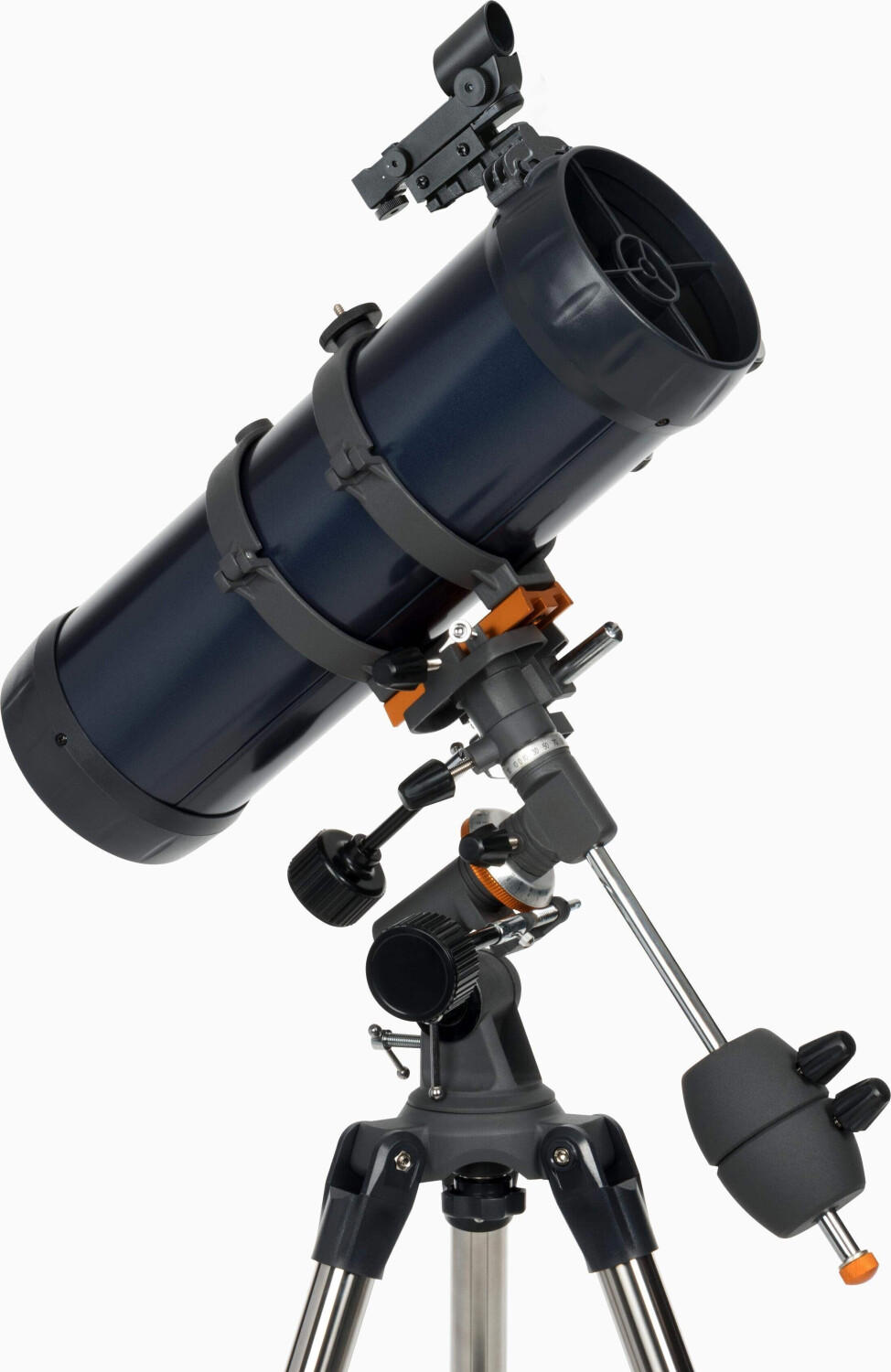
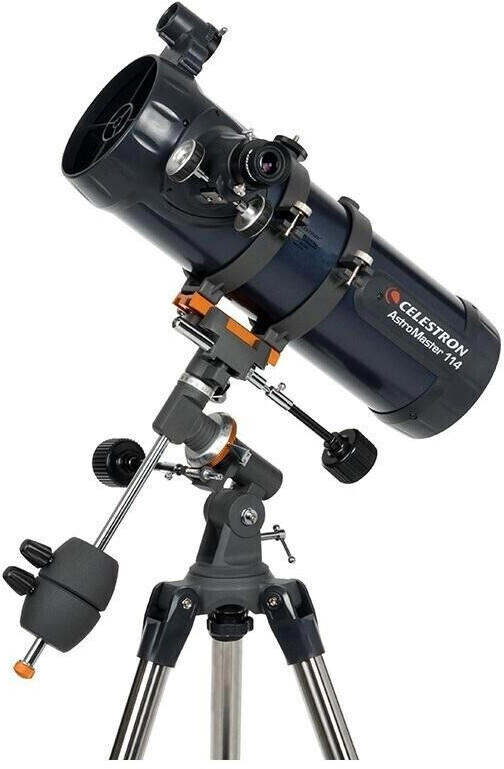
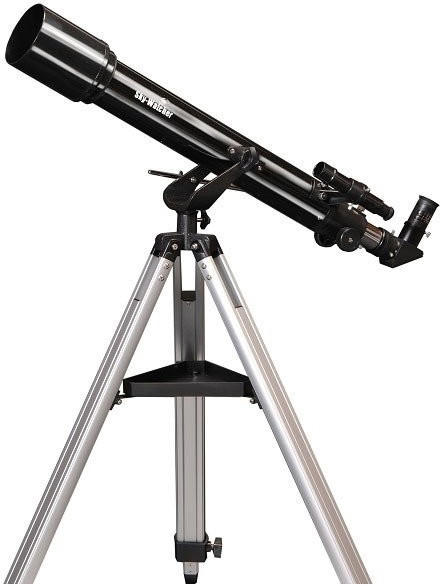
When considering ease of setup, it is important to look for features such as tool-less assembly, user-friendly instructions, and simple alignment systems to ensure a smooth and efficient setup process for your telescope. By choosing telescopes that are designed for easy setup, you can spend more time observing the skies and less time struggling with assembly.
Ease of use
This is particularly important, especially for beginners or those who don't have much experience with telescopes. Look for telescopes that offer quick and easy setup, as well as intuitive controls that allow for effortless navigation. Some great options in this category include the Celestron NexStar 8SE Telescope that comes with a computerized altazimuth mount, making it simple to find celestial objects, and the Orion SkyQuest XT8 Classic Dobsonian Telescope, which offers a straightforward setup process and smooth movement.
Additionally, telescopes with features like auto-tracking or guided tours can be highly advantageous for those who are just learning to navigate the night sky. The Meade Instruments ETX125 Observer Telescope stands out in this aspect with its built-in electronic controller that both automatically tracks celestial objects and presents guided tours of the night sky. Moreover, telescopes with a user-friendly interface, such as the Sky-Watcher ProED 100mm Doublet APO Refractor, allow for convenient operation, enabling users to focus more on enjoying the view rather than struggling with complex controls.

Sturdiness
A sturdy telescope will ensure stability and reduce vibrations, providing a clearer and steadier view of celestial objects. Look for telescopes with features such as sturdy metal construction, strong tripod legs, and durable components.
Several products on the market demonstrate excellent sturdiness. In the category of refractor telescopes, the Celestron AstroMaster 70EQ stands out with its durable aluminum construction and firmly built tripod. Additionally, the Orion StarMax 90mm TableTop is known for its stable base and robust build, making it a reliable choice for those seeking a sturdy telescope. In the category of reflector telescopes, the SkyWatcher S11610 Traditional Dobsonian 8-Inch offers stability through its solid wooden mount and sturdy tube. Another reliable option is the Gskyer AZ70400, equipped with an aluminum tripod and a sturdy construction that helps minimize vibrations for a secure viewing experience.
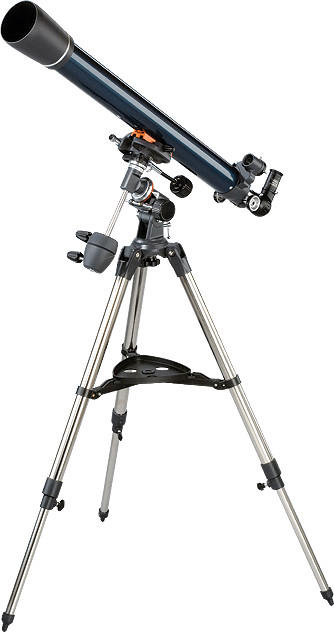
Weather resistance
Look for telescopes that are made with durable materials that can withstand harsh weather conditions. One example of a weather-resistant telescope is the Celestron NexStar 5SE. This telescope is equipped with a durable aluminum tube that is resistant to moisture and temperature changes. Additionally, it has a unique optical tube design that vents hot air to prevent internal fogging, ensuring clear and crisp views even in humid conditions. Another option to consider is the Orion SkyQuest XT8i IntelliScope Dobsonian Telescope, which is constructed with a sturdy wooden base that is not only resistant to moisture but also provides excellent stability in all weather conditions. It also features a reliable ventilation system to prevent dew and fog from affecting the optics.
Adaptability to various lighting conditions
This will determine the telescope's ability to provide clear and detailed views, no matter the lighting situation. One product that excels in this area is the Celestron NexStar 8SE Telescope. Equipped with Advanced VX mount, this telescope enables users to easily track celestial objects, making it suitable for both day and night observing. Additionally, its 8-inch aperture and fully-coated optics deliver bright and sharp images, even in low-light conditions. Another product worth considering is the Orion AstroView 90mm EQ Refractor Telescope. With its 90mm aperture and multi-coated optics, this telescope ensures outstanding performance under different lighting conditions. The included German equatorial mount provides stability and smooth tracking, allowing easy adjustments.

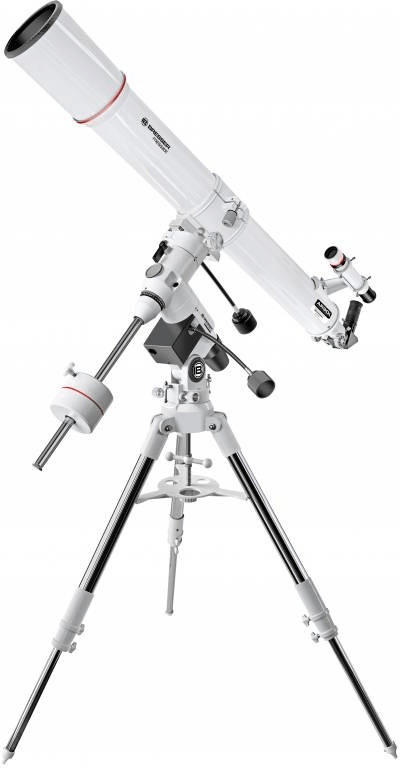
Image orientation
Image orientation refers to how the image appears when you look through the telescope. There are two main types of image orientation: upright and inverted.
Upright image orientation is often preferred for terrestrial viewing, as it provides a natural and familiar view. For example, the Celestron NexStar 127SLT offers upright image orientation, making it a great choice for observing landscapes, wildlife, or other distant objects on Earth.
On the other hand, inverted image orientation is commonly used in astronomical telescopes. While it may initially seem unusual, it does not affect the quality of the images or the observations made. In fact, inverted image orientation is often advantageous for celestial observations since it doesn't require additional image correction technology and allows for a wider field of view. The Sky-Watcher Heritage130P is an excellent option for those interested in stargazing, as it provides a true firmly-focused balanced view with a high-quality inverted image.
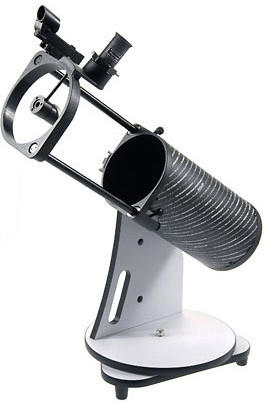
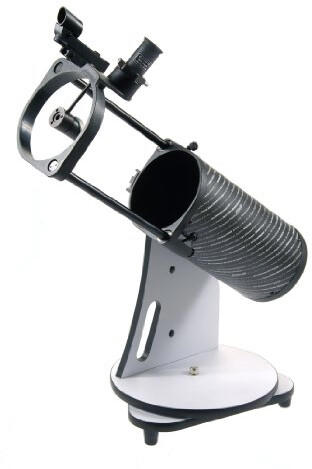
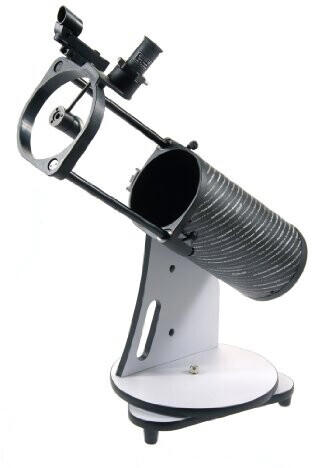
Considering the image orientation of a telescope can help ensure that it aligns with the type of viewing experience you desire, whether it be terrestrially or astrologically focused.
Durability
Look for telescopes that are built with strong and durable materials to withstand the rigors of outdoor use. For instance, the Celestron NexStar 8SE is a great option with its sturdy and long-lasting construction. It features a solid steel tripod and a durable aluminum optical tube with a fully computerized GoTo mount. Another excellent choice is the Orion SkyQuest XT10 Classic Dobsonian Telescope, renowned for its robust build quality. With its rigid yet lightweight design and a 10-inch parabolic mirror, this telescope is built to last and provide high-quality views of celestial objects.
Other telescopes worth mentioning in this category are the Meade Instruments LX90-ACF and the Sky-Watcher ProED 80mm. The Meade LX90-ACF boasts a sturdy double-fork mount and a tripod made of high-quality aluminum alloy. It is also equipped with Meade's Advanced Coma-Free optics, ensuring sharp and detailed images. On the other hand, the Sky-Watcher ProED 80mm stands out with its sturdy construction and lightweight body. Its extra-low dispersion glass and fully multi-coated optics provide superior clarity and durability to capture stunning astronomical views.
Availability of accessories
Accessories can enhance your observing experience and expand the capabilities of your telescope. One product that offers a wide range of accessories is the Celestron NexStar 8SE Telescope. This telescope comes with a variety of accessories, including a red dot finder, an eyepiece and filter kit, and a motorized mount for precise tracking. These accessories make it easier to locate celestial objects and provide versatility in your observations. Another example is the Orion 09007 SpaceProbe 130ST Equatorial Reflector Telescope. This telescope also includes accessories such as a 2x Barlow lens, a moon filter, and an adjustable-height tripod. These accessories allow for magnification and filtering when observing different objects in the night sky.
In terms of market segments, there are entry-level telescopes, intermediate-level telescopes, and advanced telescopes. For entry-level telescopes, the Celestron PowerSeeker 127EQ Telescope is a good example. It features a fully coated glass optical components and a stable equatorial mount. Intermediate-level telescopes like the Meade Instruments StarNavigator NG 114/500 Reflector Telescope offer high-quality optics and advanced features such as an audio-guided tour and built-in Wi-Fi. Advanced telescopes like the Celestron CPC 1100 StarBright XLT Telescope provide large apertures and advanced computerized tracking systems for serious astronomers. These telescopes offer a range of accessories specific to each level, ensuring that users have the necessary tools for their observing needs.
Suitability for astrophotography
When it comes to selecting the best telescope for astrophotography, it's essential to consider certain factors that can significantly impact the quality of your images. The most crucial specifications to focus on include the aperture size, focal length, and mounting system.
For beginners in astrophotography, a great choice is the Celestron NexStar 8SE Telescope. It features an 8-inch aperture, which allows for higher light-gathering capability and improved image resolution. The long focal length of 2032mm offers a greater magnification, ideal for capturing galaxies and deep-sky objects with remarkable detail. This telescope also comes with a computerized GoTo mount that precisely tracks celestial objects, simplifying the process of capturing stunning astrophotographs.
For those looking to delve deeper into astrophotography, the Orion 10" f/3.9 Newtonian Astrograph Reflector Telescope is worth considering. With its large 10-inch aperture, this telescope excels at capturing more light for brilliant images. Additionally, the short focal length of 1000mm, coupled with the fast f/3.9 ratio, is perfect for wide-field astrophotography, making it an excellent choice for capturing detailed nebulae and star clusters. The robust equatorial mount provided with this telescope ensures precise tracking for accurate long-exposure photography.
Group 1 - Entry-level astrophotography:
Group 2 - Intermediate astrophotography:
Orion 10" f/3.9 Newtonian Astrograph Reflector Telescope

Compatibility with smartphones or cameras
This feature allows you to easily take pictures and capture stunning celestial objects, making your stargazing experience even more enjoyable and memorable. One great telescope that offers compatibility with smartphones is the Celestron NexStar 8SE Telescope. Equipped with a built-in camera interface, this telescope allows you to directly connect your smartphone or camera to capture images or videos of planets, galaxies, and nebulae with ease. The Orion StarBlast 6 Astro Reflector Telescope is another excellent choice that supports smartphone compatibility. Its adjustable smartphone adapter securely holds your smartphone and aligns the camera with the telescope's eyepiece, enabling you to effortlessly capture breathtaking views of the night sky.

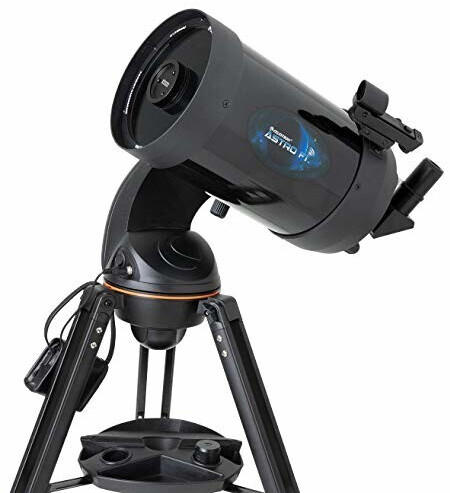
Computerized or manual controls
Computerized telescopes come with built-in databases and motorized mounts that enable easy tracking of celestial objects. They often feature hand controllers with integrated GPS for precise alignment. One excellent example of a computerized telescope is the Celestron NexStar 8SE. With an 8-inch aperture and StarBright XLT coatings, this telescope provides stunning views of star clusters, galaxies, and nebulae. It comes with a computerized hand controller that allows users to automatically locate thousands of celestial objects with its SkyAlign technology.
On the other hand, manual telescopes require users to fully manipulate the telescope to locate and track objects manually. These telescopes are often more affordable and straightforward to use. A great option in this category is the Orion SkyQuest XT8. With its 8-inch aperture and parabolic mirror, it offers excellent light-gathering capabilities. Users gain full control over manual adjustments to track celestial objects using its EZ Finder II reflex sight for easy aiming.
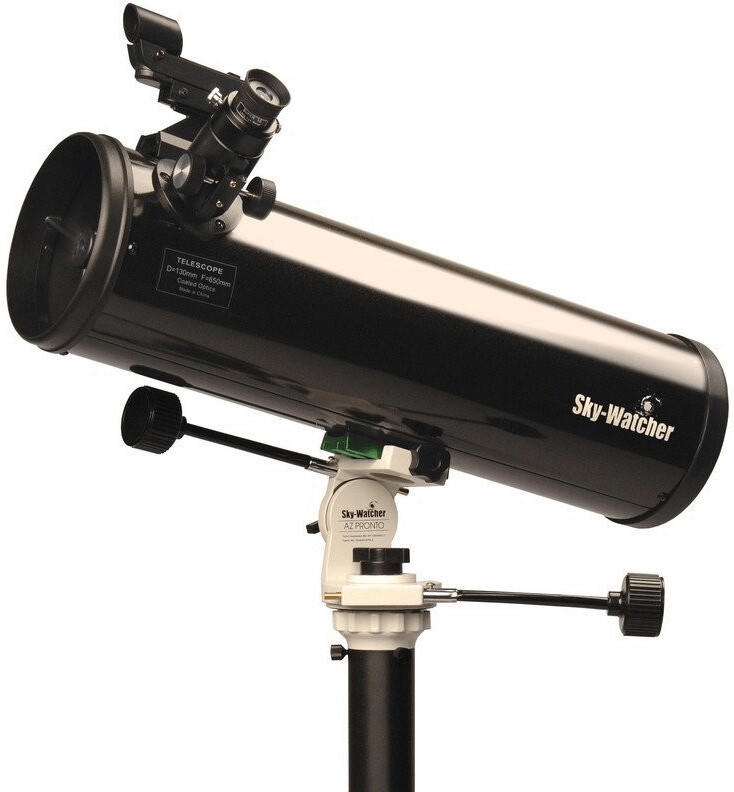
Ultimately, the choice between computerized and manual controls depends on personal preferences and experience levels. Computerized telescopes may have a steeper learning curve but provide convenience for locating and tracking objects accurately without much effort. Conversely, manual telescopes offer a more hands-on experience and are often more budget-friendly.
Motorized tracking or Go-To system
These features are particularly valuable for those new to astronomy or for people who wish to simplify their stargazing experience. A motorized tracking system automatically moves the telescope to compensate for the rotation of the Earth, keeping the object being observed steady in the eyepiece. Similarly, a Go-To system uses computerized alignment to locate celestial objects with ease, making it a great option for beginners.
One example of a telescope with motorized tracking is the Celestron NexStar 8SE. It features a motorized alt-azimuth mount that allows for automatic tracking and alignment capabilities. With a large 8-inch aperture and a focal length of 2032mm, this telescope provides stunning views of both celestial and terrestrial objects. Another option is the Orion StarSeeker IV 130mm GoTo Reflector Telescope, which combines a 130mm reflector optics with a motorized Go-To system to automatically find and track over 42,000 celestial objects. It also has a built-in "Tour" mode which offers a guided tour of popular celestial objects. These telescopes are examples of how motorized tracking and Go-To systems enhance the stargazing experience, making it easier and more enjoyable.
Range of included magnification options
This refers to the telescope's ability to increase the size of the observed object. Consider telescopes that provide a wide range of magnification options, such as the Celestron NexStar 8SE Telescope with a magnification range of 29x to 480x, or the Orion SkyQuest XT8 Classic Dobsonian Telescope with a range of 29x to 239x. These telescopes offer a versatile range of magnification options, allowing you to observe various celestial objects with different levels of detail.
It is worth noting that some telescopes come with specific magnification options designed for specific targets. For instance, the Orion StarShoot 80mm AutoTracker Refractor Telescope, ideal for astrophotography, features a specific 25x to 111x magnification range, ensuring optimal image quality for capturing celestial objects. Additionally, telescopes can be grouped into segments based on their intended use, such as beginner, intermediate, and advanced. A beginner telescope like the Celestron PowerSeeker 127EQ Telescope often offers a range of 50x to 250x, making it suitable for entry-level stargazers. Intermediate telescopes, like the Orion StarBlast II 4.5 Equatorial Reflector Telescope, typically provide a range of 26x to 228x, offering enhanced magnification options for those seeking a bit more power. Advanced telescopes, such as the Celestron CGX-L Equatorial 1100 EdgeHD Telescope, can offer a broad range of magnification options starting from 19x and reaching up to an impressive 714x for experienced astronomers.

Price
There are telescopes available in a wide range of prices, ranging from budget-friendly options to high-end models. For those looking for a more affordable telescope, the Celestron Travel Scope 70 is a great choice. Priced at approximately $90, this telescope is perfect for beginners and offers a 70mm aperture with fully-coated glass optics, providing clear and bright views of celestial objects. Another budget-friendly option is the Orion FunScope Astro Dazzle telescope, priced at around $100. This telescope features a 76mm aperture and includes two eyepieces for customizability. For those who are willing to invest more, the Celestron NexStar 5 SE is a mid-range option priced at approximately $700. It offers a portable design, a 127mm aperture, and a fully computerized mount for easy tracking and locating of objects. Finally, if you are looking for a high-end telescope, the Meade LX200-ACF is a top-tier option with a price range starting from $5,000. This advanced telescope includes a whopping 14-inch aperture, allowing for exceptionally detailed observations of celestial bodies.
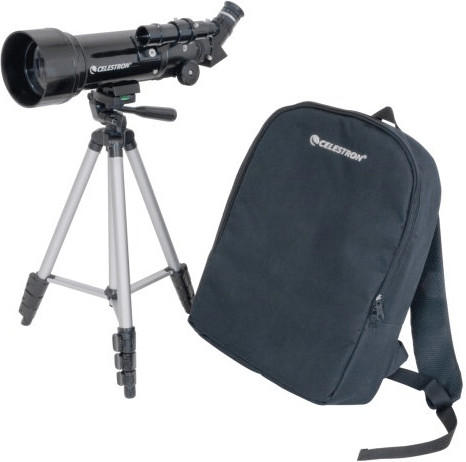
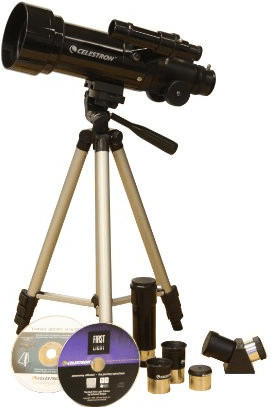
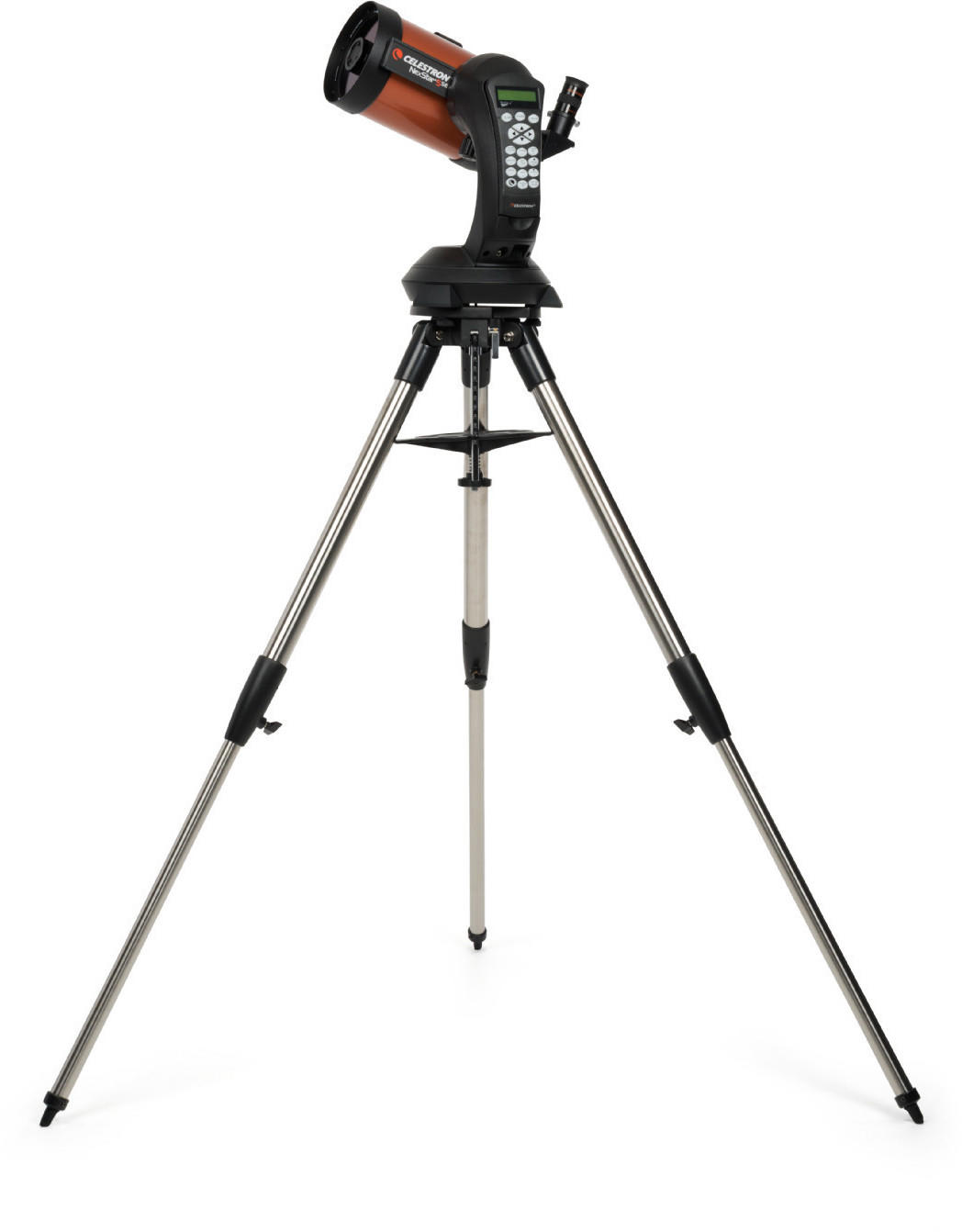
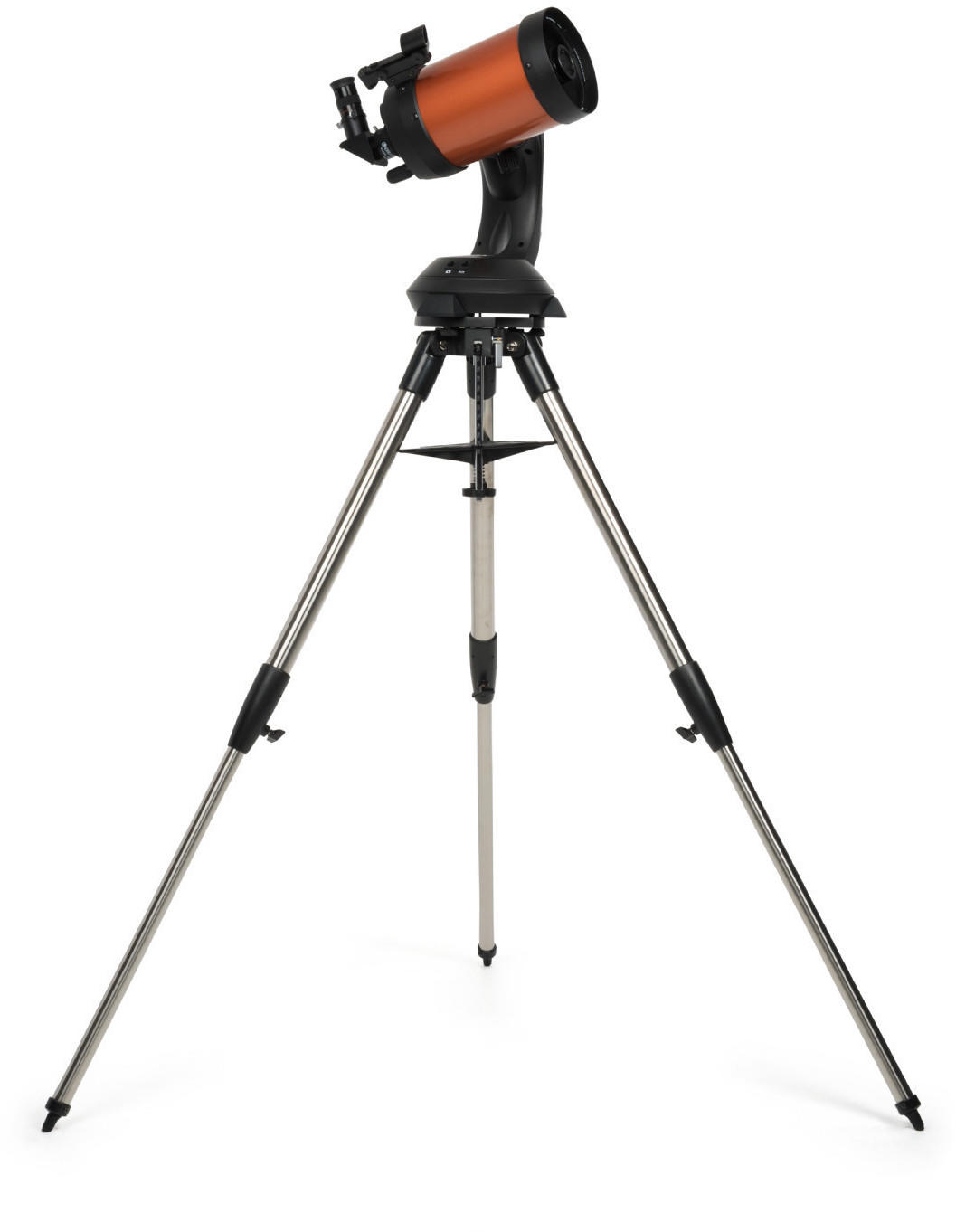
Variety of brands
One popular option is the Celestron brand, known for their high-quality telescopes with advanced features such as motorized mounts and GPS alignment. The Celestron NexStar 8SE is a highly regarded model from this brand, offering an 8-inch aperture and computerized tracking capabilities. On the other hand, Orion Telescopes & Binoculars is another well-established brand that offers a range of affordable yet reliable telescopes. The Orion SkyQuest XT8 Classic Dobsonian Telescope is a standout product, featuring an 8-inch aperture, a stable base, and a reflector design for sharp and detailed views of celestial objects.
Another group worth considering is the higher-end telescopes designed for astrophotography. One notable brand in this segment is William Optics, which specializes in providing telescopes optimized for capturing stunning images of space. The William Optics Zenithstar Z73 is a top choice within this brand, boasting a 73mm aperture, a durable carbon fiber tube, and a 2-element air-spaced telescope design for exceptional image quality.
It's important to consider each brand's reputation for build quality, customer service, and the availability of accessories and additional equipment. Consulting reliable sources such as astronomy forums and expert reviews can provide further insights into the pros and cons of particular brands, ultimately helping you make an informed decision when choosing the best and right telescope for your needs.